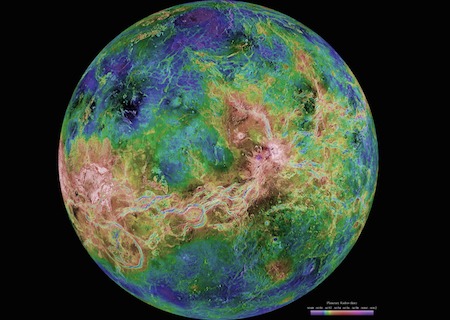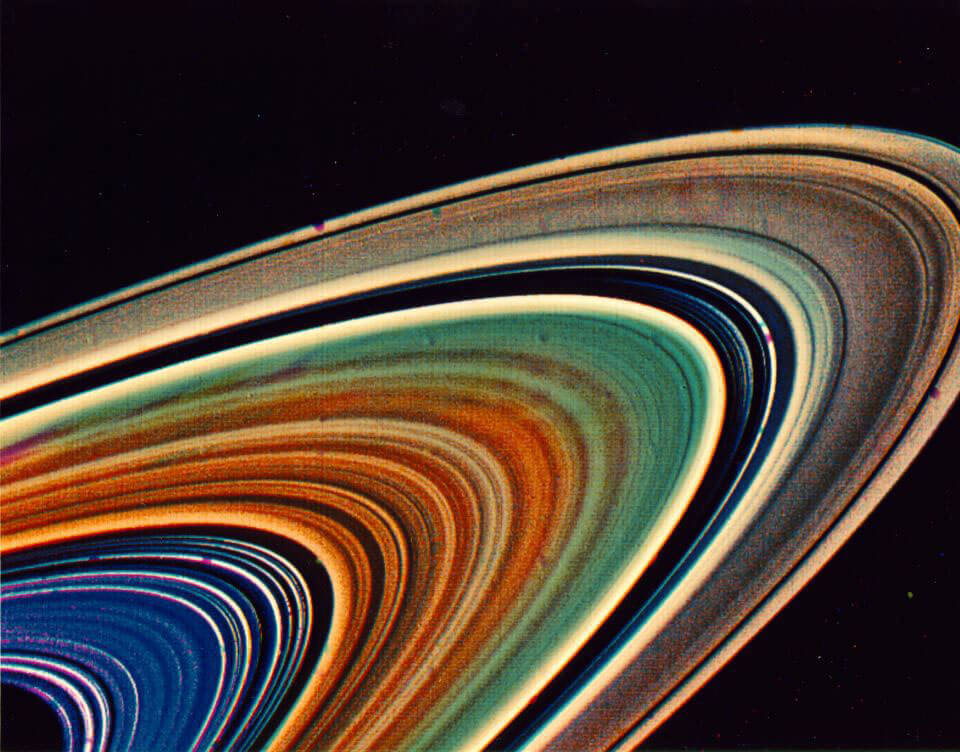Gustav Holst’s iconic suite, The Planets
– with Visuals by NASA
September 30 & October 1
St Pete and Clearwater
Details here
Orchestras around the world seldom go wrong in presenting The Planets, Gustav Holst’s ever-popular suite that takes listeners on a cosmic, although abstract, tour of the solar system.
The Florida Orchestra has visited this brilliantly inventive score several times over the years, delivering performances that reveal a fearless rhythmic plan full of nuance and power. Although the music stands on its own as impressionistic, many orchestras provide visuals – and in opening its new season, TFO will project NASA videos of the planets above the stage.
Pieced together from the Viking, Voyager and Magellan missions, the video uses computer realizations based on synthetic aperture radar, which creates the illusion of a craft flying over peaks and valleys along a planet’s surface.
Although it may be an artistic gamble to be so overtly programmatic with a suite inspired more by mysticism and astrology than astronomy, the mosaic delights audiences – especially children – and if this brings them back to the concert hall, Holst would have approved.
The Planets is a suite of miniature, often turbulent tone poems of varying moods. Holst, who died in 1934, wanted an emotional experience rather than a postcard tour, and he fleshed out his score with an ear for drama – the compact, contrasting themes of each section creating tension and release as a whole.
Some might compare it to Mussorgsky’s Pictures at an Exhibition or Elgar’s Enigma Variations, but Holst’s innovative approach more closely mirrors the influence of Schoenberg and Stravinsky.
“There’s just a powerful juxtaposition of the different sections, especially between Venus and Mars,’’ says TFO Music Director Michael Francis. “And it was an absolutely radical piece of orchestration for its time and utterly modern in its language.’’
“It’s about human nature symbolized, and this notion of astrology,’’ he adds. “Holst gives us a complete understanding of the human condition through a celestial lens. I find it a very profound piece of music and a wonderful work of art.’’
Holst began crafting the suite in 1913 after a friend introduced him to astrology. In the years after its premiere in 1918, people began to associate the music with the horrors of the First World War, especially the tumultuous opening, Mars.
Soon, The Planets was being played everywhere, much to the consternation of the introverted composer, who felt its popularity overshadowed, and even diminished, his lesser-known works. Royalties from The Planets, however, made him a wealthy man.
Originally titled Seven Pieces for Large Orchestra, the suite is remarkably diverse, with each section in complete contrast to those around it. Holst omitted Earth because it had no astrological significance, and Pluto had yet to be discovered at the time.
Of all the sections, the most evocative music comes at the end, in Neptune. It employs a melismatic women’s chorus – no words or text, just sound – and ends with a “fade out’’ where notes and silence are indiscernable.
Here’s a summary of each stop
in your celestial journey. . .

- Mars, the Bringer of War─ The first section to be composed, in 1914, opens with a menacing ostinato in 5/4 rhythm that quickly turns into a brassy, barbaric masterpiece of rhythm designed to unsettle listeners from the get-go.
- Venus, the Bringer of Peace─ Relaxed and ethereal, this portrayal of the goddess offers a bit of relief from the turmoil that came before, featuring the luminous blend of strings and harp.
- Mercury, the Winged Messenger─ The last section to be completed, in 1916, this scherzo exchanges quicksilver themes in a delicate dance that ends almost as soon as it begins.
- Jupiter, the Bringer of Jollity─ This Jovian celebration is the most extroverted of the bunch, setting up a contrast against a serious middle section. The melody was later used in the hymn “I vow to thee, my country.’’
- Saturn, the Bringer of Old Age─ This solemn section unfolds as an expansive march of time, first grim, then peaceful, with tolling bells suggesting a release from life.
- Uranus, the Magician─ Four notes from the brass introduce the next planet, the music transformed into a macabre march that seems to represent spent souls.
- Neptune, the Mystic─ A disembodied women’s chorus sings a wordless hymn that evaporates into silence, which listeners can visualize as eternity or the celestial void beyond our solar system. This section is entirely in pianissimo.
The orchestra opens the program with its first-ever performance of Drum Circles by Christopher Theofanidis, featuring a guest appearance by the Percussion Collective, a group of virtuoso musicians based in Ithaca NY.
Saturday, September 30 at 8 pm
Mahaffey Theater, 400 1st St. S.
St. Petersburg
Sunday, October 1 at 7:30 pm
Ruth Eckerd Hall
1111 McMullen Booth Road
Clearwater






